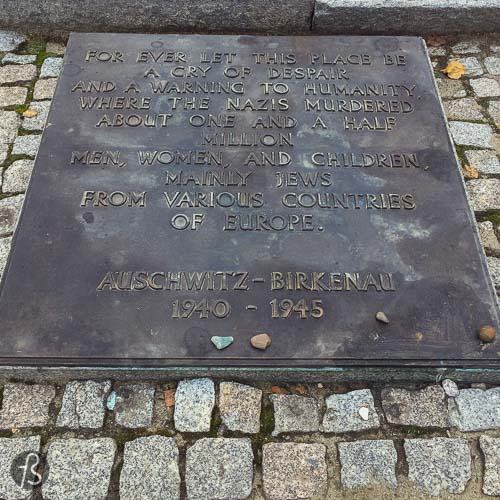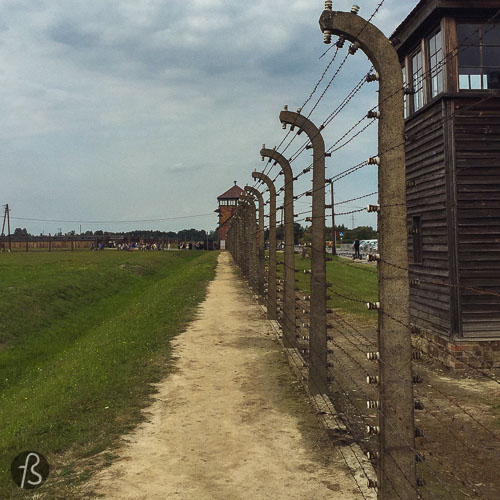Auschwitz-Birkenau is the best-known place of martyrdom and destruction in the world. This Nazi German death camp in Oświęcim has become a symbol of the Holocaust, of horror, and of genocide. The camp’s name stands as a cultural code that defines the breakdown of our civilization and culture.
During the Second World War, Nazi Germany created different types of camps around occupied Europe. But, among them, Auschwitz-Birkenau became the best known.
There are a lot of factors behind this, from the size of the facilities and the large number of victims to the number of survivors that we’re able to tell the world their history of pain and suffering.
When I first visited Krakow in the summer of 2010, I wasn’t aware that Auschwitz-Birkenau was so close to the city. My historical knowledge of the Second World War was still related to the history classes I had back in school when I lived in Brazil.
But I remember arriving in Krakow and seeing vans outside the train station with signs pointing to death camp tours.
It was only eight years later that I managed to find my way into Auschwitz-Birkenau. It was the last part of an Eastern European trip with a friend where we went from Budapest to Kosice, from there to Lviv, and, finally, to Krakow.
There, on my last day of the trip, I had arranged a guided tour of Konzentrationslager Auschwitz, as it’s known in German and the experience I had there changed something inside me.



A Brief Story of Auschwitz-Birkenau
To Nazi German, this camp was known as Konzentrationslager Auschwitz. We recognize it now as Auschwitz concentration camp, but this was a large complex of more than 40 concentration and extermination camps that were operated by Nazi Germany in occupied Poland during the Second World War.
The main camps were Auschwitz I in Oświęcim, Auschwitz II–Birkenau, where the extermination became an industry, Auschwitz III–Monowitz, which was a labor camp and there were several subcamps around the same area. Those camps were a big part of what Nazis called the Final Solution to the Jewish Question.
The camp had several functions and a complicated history, and this is why Auschwitz-Birkenau became significant after the war. It was the largest center for the mass extermination of European Jews and, at the same time, the largest concentration camp for war prisoners. It was a place of death, of slave labor, and of criminal medical experiments on such a large scale that it feels weird to think about it as I write this.
Between 1940 and 1945, Nazi Germany sent to Auschwitz-Birkenau at least 1.100.000 Jews from different European countries.
Also, they sent almost 150.000 Poles, which were mostly political prisoners, more than 20.000 Roma from several European countries, and 40.000 prisoners of war from the Soviet Union, France, Czech Republic, Ukraine, Yugoslavia, and more.
Approximately 1.3 million people were sent to Auschwitz-Birkenau, and 1.1 million of them died there.






Auschwitz-Birkenau was founded in the spring of 1940 as a concentration camp. Similar to other ones that already existed in Germany and occupied Europe. The main reason behind this was the fact that the mass arrest of Poles in and around Krakow caused an overflow of the existing prisons. A special commission was set to solve this problem, and they found a suitable site with prewar barracks on the outskirts of a small town called Oświęcim.
They changed the name of the city to Auschwitz, and the camp received the name Konzentrationslager Auschwitz. In June 1940, the first Polish prisoners arrived in the camp.
The site chosen had some qualities that made it attractive to Nazi Germany. It was outside the city, and isolating it from the outside world was easy. There were convenient rail and road access in the vicinity of the camp, and these factors prompted the Nazis to expand the camp.
By 1941, not only Poles were arriving at Konzentrationslager Auschwitz. There were war prisoners from France, the Soviet Union, and Yugoslavia. Also, some of the transports contained Jews who had been arrested in their occupied countries.
While its primary function was as a concentration camp, by 1942, Auschwitz-Birkenau began to serve a second function. It became one of the centers of mass extermination of European Jews.







The Jews that were brought to extermination camps were deceived. German authorities promised them settlements and jobs far away from the cities where they used to live. According to instructions, they were allowed to take along some baggage but nothing valuable.
Some of these baggage and personal items can be seen today when you do the tour of Auschwitz I. There, you can find glasses, luggage, and some essential household items that were left after the Nazis fled the camp. Most of the first quality items brought to the camp were collected and distributed to army officers.
Konzentrationslager Auschwitz was a camp with two functions that contradicted each other. On the one hand, the authorities wanted to exploit the prisoners to the maximum degree of labor. On the other hand, they wanted to wear them down and destroy them as quickly as possible.
This is why the unloading of prisoners was necessary at the camp.
When the Jews left the trains, they were faced with SS physicians who conducted a simple selection to see who was capable of labor and could be useful for war production. Those who were considered useless – children, sick people, pregnant women, older people – were led straight to the gas chambers and killed with poison gas. Usually, they consisted of 75% of the people being transported there.








Of those who survived the first selection, more than half died in the camps of torture, starvation, disease, punishments, and criminal medical experiments. The other half was exploited as slave labor, something that was an enormous source of income for the SS and German companies.
Every day, new transports were arriving at Auschwitz-Birkenau to replace the prisoners who had worked to death or were killed.
In 1944, near the war’s end, the Red Army drew close to Oświęcim. The camp authorities decided it was time to liquidate and destroy all the evidence of their crimes at Auschwitz-Birkenau. The gas chambers were used to exhaustion and destroyed. The furnaces where bodies were burnt were blown up, and documents were burned.
Those prisoners who were capable of labor were evacuated to other locations; others were left behind and liberated by the Soviet soldiers on January 27, 1945. But, despite all these efforts, they didn’t manage to destroy everything. Many buildings, documents, and objects remained, including the personal possessions of the many victims of Auschwitz-Birkenau.
Today, they bear witness to the enormity of the atrocities that were committed there.




How to visit Auschwitz-Birkenau
Visiting Auschwitz-Birkenau is simple, and admission is free of charge. The first thing you need to do before heading toward the camp is to reserve a date for you on their website. Their guided tours are exactly what you need to have to understand the place where you will be visiting. And don’t forget to book the guided tour in advance since this is one of Poland’s most popular tourist destinations, and many people visit the place.
In the summer of 2018, I did the official three-and-a-half-hour tour. In this tour, you will be guided through the ground and buildings of Auschwitz I and Auschwitz II-Birkenau camps. These are the areas open to visitors.
At Auschwitz I, you will be guided through the oldest buildings in the camp. There, Nazis carried out the first experiments in mass extermination by using Zyklon B to murder people. There, the first Jews were murdered, and most of the executions by shooting happened.
The prison jail was located where the camp commandant’s office could be found. Inside the buildings here, you will find the personal items of those who were killed and what they left behind for us to see. It was from Auschwitz I that the death camp was expanded and became a complex.
Auschwitz-Birkenau is where Nazi Germany erected the machinery of mass extermination. Transport trains would arrive there, and those who were considered useless were led to die in gas chambers. Those who survived this first interaction were directed to more than 300 primitive barracks made of wood and kilometers of barbed wire fences. More than a hundred thousand prisoners were there in 1944.
Today, you can visit the ruins of gas chambers and a crematory surrounded by human ashes.






How can you arrive at Auschwitz-Birkenau
The museum and memorial known as Auschwitz-Birkenau can be found in the outskirts of Oświęcim and can be reached by train from Krakow. I arrived there by train, and it was smooth and straightforward. When you arrive at the train station, you can take a bus or walk to the museum, as I did.
Between Auschwitz I and Auschwitz-Birkenau, you will need to take a museum bus since the camps are more than 3 kilometers apart from each other. No bus fare is required, but you can walk there if you want.
If you need more information, you should check the Auschwitz-Birkenau website.






Personally, I feel like everybody should visit Auschwitz-Birkenau at least once in their lives. The feeling that I had in my body when I first glanced at the gate to Auschwitz I with its Arbeit Macht Frei sign is impossible to describe. It only gets worse once the tour takes you inside a gas chamber where countless people died, and you can see how they scratched the walls trying to get out of this place.
Also, I feel like it is important to commemorate and remember those who died there. Soon, we won’t have any survivors of the camp anymore. And it’s up to us to remember what happened there and that none of this would ever happen again.
This is why I believe everybody should visit Auschwitz-Birkenau.

Before I finish this, I must say that the gift shop at Auschwitz-Birkenau is fantastic and that you should go there and buy as many books as possible. Most of the text you can find here came from my research in the books I got there.
But you can also buy something from their online bookstore.
Our Visit to Auschwitz-Birkenau in Poland
Więźniów Oświęcimia 20, 32-603
Oświęcim, Poland
50°02′09″N 19°10′42″E